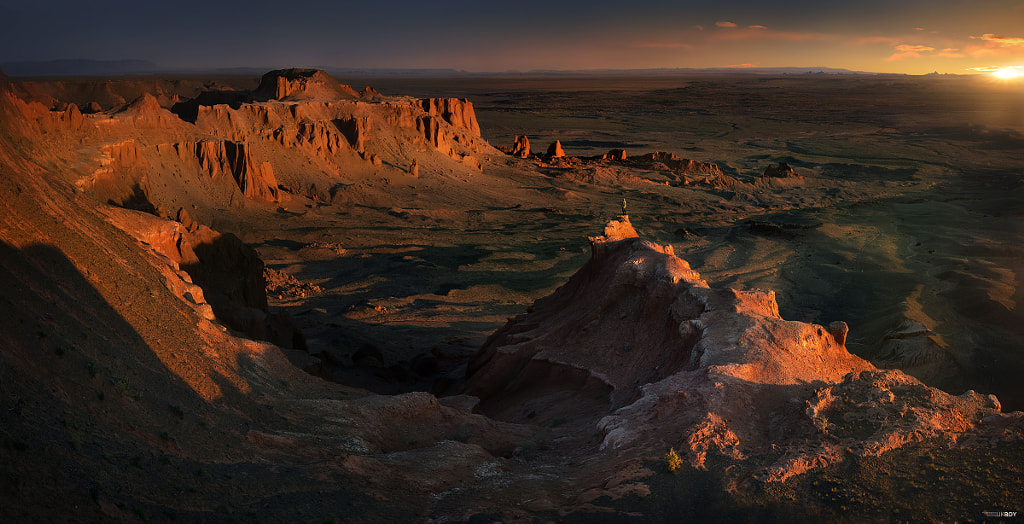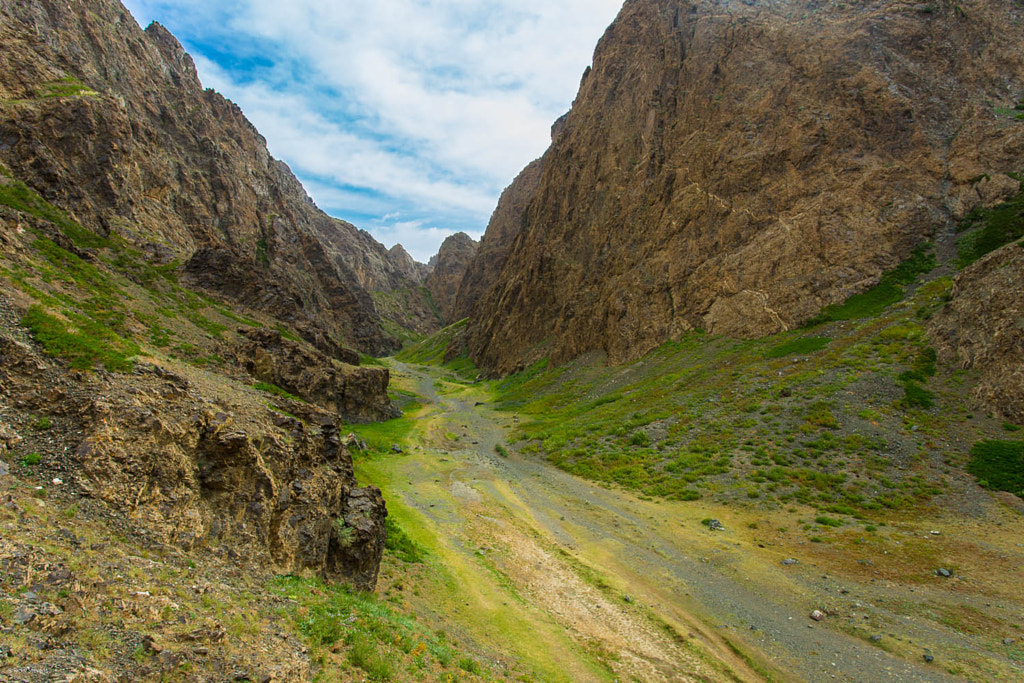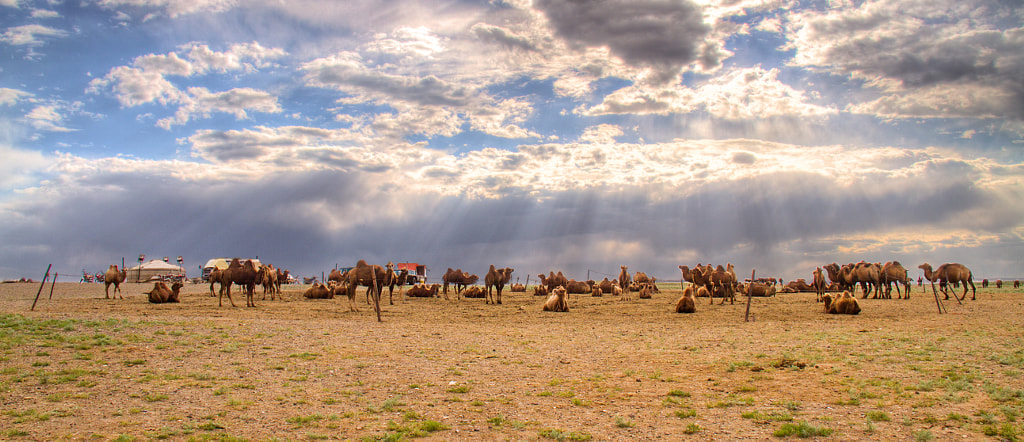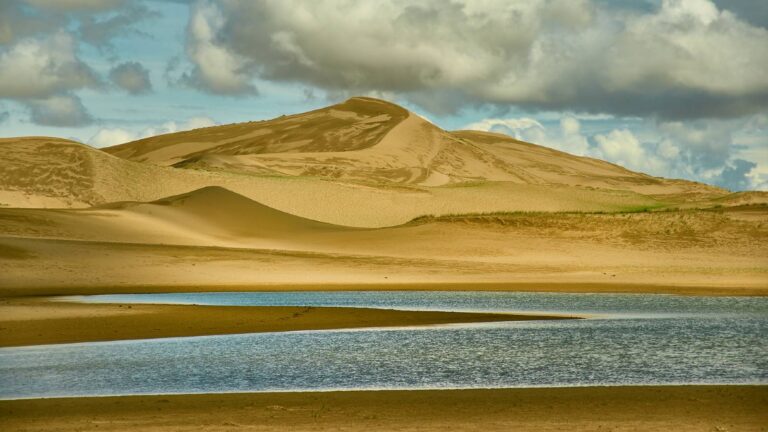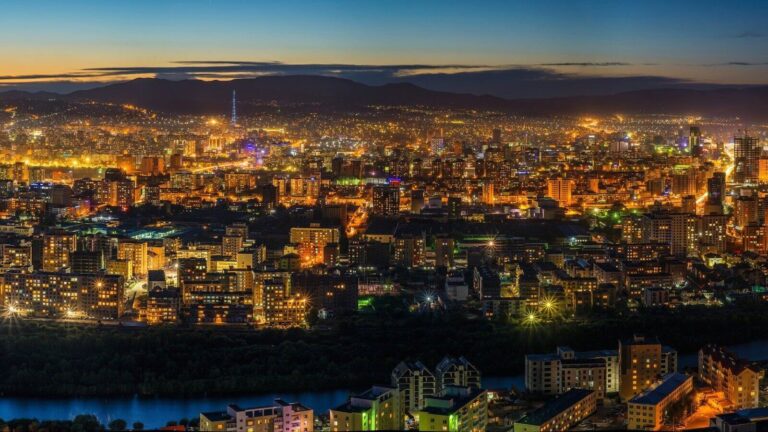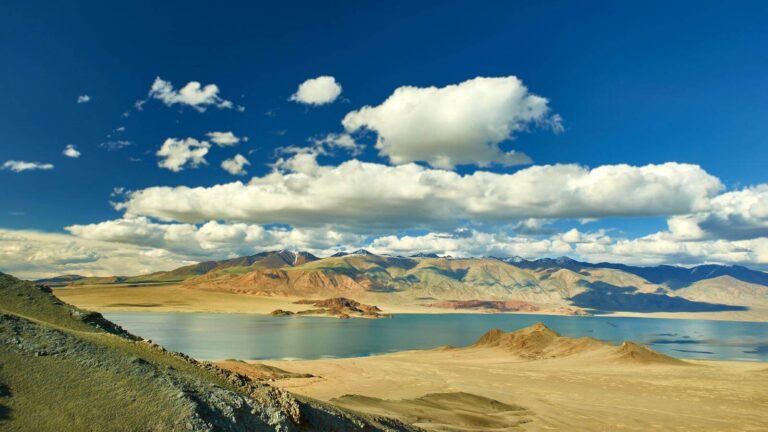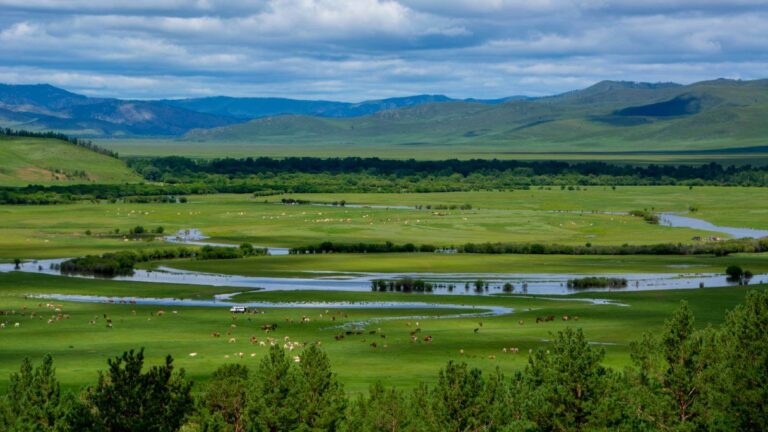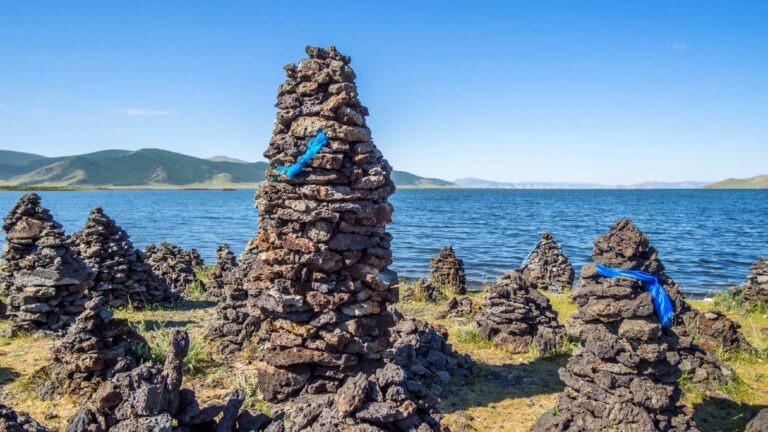The region’s capital Dalanzadgad is the gateway town for visiting many of Umnugovi’s sights., including Gurvan Saikhan National Park, which can be reached from Ulaanbaatar by bus (about nine hours), minivan or daily flight. If you’re wanting to journey deeper into the southern Gobi wilderness you’ll need a reliable 4WD.
One of the highlights of the Gobi are at its ‘Flaming Cliffs’ (Bayanzag), which offer idyllic desert landscapes that come sunset glow an unworldly fiery red. It’s an area famous for dinosaur fossils, and a further 22km north-east are the spectacular white-sand Moltzog Els dunes where you can arrange camel treks.
Spanning over 20,000 square kilometres in the Gobi Desert is the dramatic Gurvan Saikhan National Park that’s home to some of Mongolia’s largest sand dunes along with scenic gorges and mountainous terrain. It’s a dream destination for outdoor enthusiasts with hiking, biking and horse riding all possible, as well some interesting wildlife, including more than 200 species of bird as well as the elusive snow leopard, wild camel, ibex and argali sheep.
Highlights here include the epic 300m Khongoryn Els dunes, Yolyn Am Gorge with its dramatic cliffs and the Khavtsgait Petroglyphs for its ancient outdoor gallery of art dating from between 8000 BC and 3000 BC.
A part of the Tost Mountain range is the Tost Tosonbumba Nature Reserve, a swathe of protected wilderness established in 2017 that links the Small Gobi and Gurvan Saikhan National Park, to protect the rarely spotted snow leopard.
Umnugovi is famous for its significant paleontological discoveries. Only in the 1920s did adventurers chance upon dinosaur fossils dating back 70 million years, and today dinosaur skeletons are still being discovered including 80-million-year-old fossils of a Protoceratops and Velociraptor in battle. For the best displays of dinosaur fossils , however, you’ll need to head to the Museum of Dinosaurs in Ulaanbaatar.
Come March, sleepy Bulgan comes alive for two days as visitors descend here from around the world for its annual Bulgan Camel Festival. Still wearing their luxuriant winter coats, events include camel racing and camel polo, while guests can also learn how nomads look after their prized livestock.
Making up part of the Gobi Desert, it’s not surprising that Umnugovi is not only Mongolia’s hottest region but its driest too. With minimal yearly rainfall (130mm per year), here you’ll encounter a harsh and extreme desert climate, and in summer temperatures reaching an average of 38°C. Winters are bitterly cold.
While most of Mongolia’s economy relies on agriculture, here in Umnugovi it’s all about mineral deposits, particularly gold and copper mining in Khanbogd sum.
Tourism is another important part of the economic sector with plenty of ger camps and tour operators in the area.

